How We Shot Car Scenes at Night on a Micro-Budget for 'DriverX'
It's time to light it up.
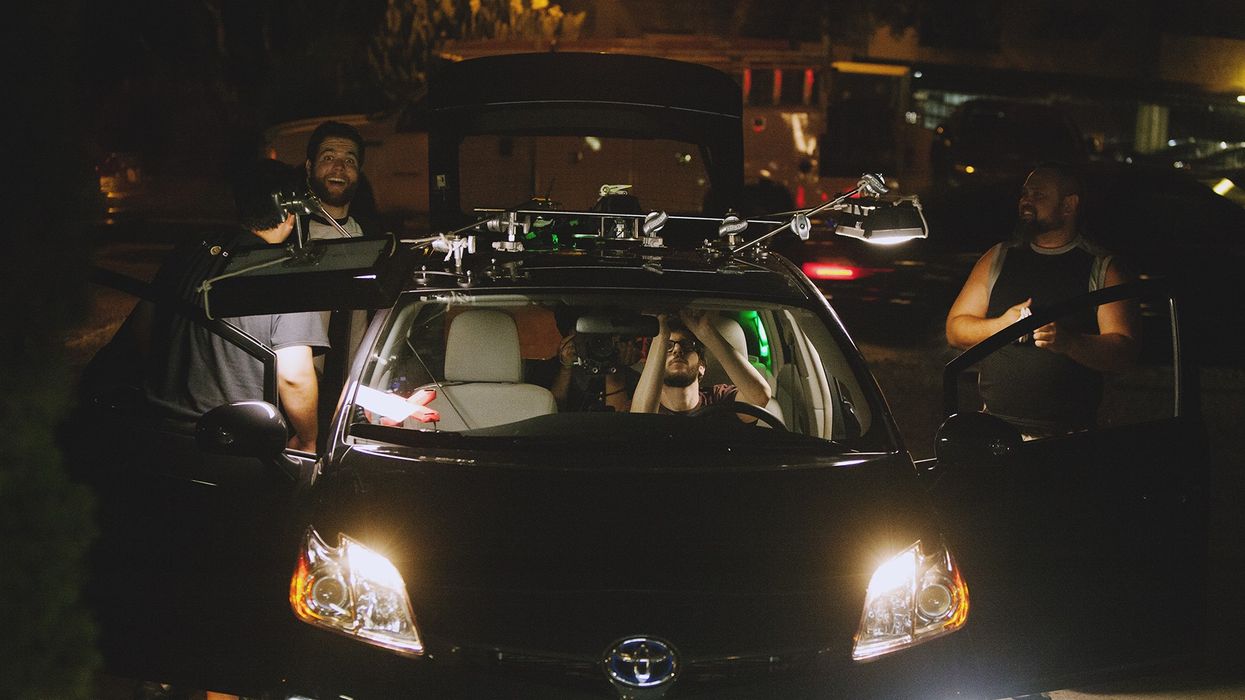
I’ve been making films with my creative partner Henry Barrial since 2000, when I came on as an Associate Producer to his first feature Some Body, a film that cost just $3,000 before it was submitted to the company I was a principal at, Next Wave Films.
We gave Some Body finishing funds and ultimately it premiered in Dramatic Competition at the 2001 Sundance Film Festival. I think it’s fair to say that even though Henry and I have made four other micro-budget features since, Henry has never really fully embraced no-budget filmmaking since that first film. In other words, he has been begrudgingly pulled into the process each time in the service of getting a film made rather than waiting around for it to perhaps never happen.
I mention this as an introduction to how we shot the nighttime car scenes in our newest film DriverX because I want to make it clear to anyone reading this that our goal for these films isn’t to just “make a film” or “see how little we can spend.” The goal has always been to make the best movie we can under the circumstances, which just happen to be with very limited funds.
DriverX is our fifth feature together. It came about when we couldn’t secure financing for a higher-budget film we wanted to make. Henry had to pay the bills while we were waiting for that financing to come together, and with two kids to take care of during the day, that meant joining the Gig Economy and driving Uber at night.
From the first night, as interesting and crazy things started happening in his car, we knew there was a compelling, topical film to be made about a middle-aged Gen Xer driving around millennials. Henry starting writing down events and things people said and calling me at 2AM to tell me about them.
As he began writing the script, I started thinking about how we would put a film like this together. Immediately, even before reading anything, it felt doable on a tiny budget. We had the car and the driver’s house—both Henry’s—and as it turns out, that was probably about 85% of our locations.
The Challenge: Shooting in a Car Isn’t Easy (or Cheap, Usually)
What also became clear very early on was the challenge of shooting the car scenes effectively at night. In previous films, we’d shot a bit of car stuff, but it was very limited, with hardly any dialogue, and mostly during the day. DriverX was completely different.
Once the script was finished, I could see there were dense dialogue scenes in the car, some as long as 7 or 8 pages. I knew we wouldn’t have the money to shoot on a process trailer, but it was clear that shooting with a handheld camera inside the car like we’d done previously wasn’t going to cut it either.
Right away, Henry mandated that he didn’t want these scenes to look like Taxi Cab Confessions. No wide angle lens viewpoints from the corner of the windshield. No unmotivated light sources coming from under the steering wheel or above the actors. While we wanted the cinematography to look natural and unfussy, we also wanted it to be cinematic. We wanted it to look like a movie, not a documentary or reality show. We wanted it to look good.
DriverX was Henry’s attempt to capture a certain reality. He wanted the dialogue and the acting to be authentic and honest.
I really had no idea how I was going to achieve this, but I did some research and spoke to some filmmakers who had recently shot “car movies” on tiny budgets. We even met with some folks who showed us the process that many TV shows use to shoot car scenes, whereby your car is on a stage and LCD monitors with your backgrounds playing on them, synced together, play outside the car, and special monitors reflect the backgrounds onto the windshield, helping to light the scene.
When you added up all the various costs, this process was very expensive, but more importantly, it also looked artificial, which was deadly for a film like ours.
DriverX was Henry’s attempt to capture a certain reality. He wanted the dialogue and the acting to be authentic and honest. He wanted every Uber driver to recognize and relate to each of the moments portrayed in the film. Something fake or phony just wouldn’t do.
Henry and I then went over to the home of a DP Henry had recently worked with on a music video, a gentleman who had gone to AFI with the DP from our previous film, Luca Del Puppo. Luca was now living in New York and couldn’t work on the film, but he wholeheartedly endorsed his friend Daniel Lynn (https://www.danielvlynn.com/ Instagram: @dvlynncine). Over at Dan’s, we saw footage from a short film he had just shot called American Dancer.
There were a few night driving scenes that he showed us using a process he had developed with friends using some new technology. The footage looked amazing—cinematic, but also natural. He explained that because they were shooting with the relatively new Sony A7s, a tiny mirrorless camera that practically sees in the dark, the camera mounts were small and no hostess tray was needed. This concept was a critical factor for me and our “budget.” Because the camera when mounted on the doors would not stick out beyond the side mirrors, no police escort was needed.
All that was required to make this legal was what’s known as a grid permit, which allowed you to drive certain pre-planned stretches of roads in grids that you worked out with the permit office. Total cost of a grid permit in Los Angeles: $710. Because Dan owned his own camera mounts and because these were relatively quick to set up (quicker than a hostess tray, but still more time consuming than normal shooting) and didn’t require several crew members to build, I felt confident we could pull off the look we wanted on the small budget we had.
How Much Do You Have, Not How Much Does It Cost
A word about the budget. I “greenlit” the film without a budget. We moved forward with pre-production before I knew what it might cost me, before there was even a finished script, based on a gut feeling I could pull together what we were going to need.
When the script was finished, I broke it down and scheduled it, and then put together a budget. My budgets aren’t based on what things actually cost. They’re based on how much money I think I can spend, and built first with line items that have a fixed or known cost— SAG actor fees, production insurance, that grid permit—and then much of the rest of it is aspirational and discretionary. I figure out exactly what crew I can get away with knowing I will do a lot of the jobs myself. I make up figures for things like locations based on how important they are to the overall film.
The shoot was broken up into multiple shooting periods, mainly because of our lead actor Patrick Fabian’s shooting schedule on the TV show he stars in, Better Call Saul, (he plays slick lawyer Howard Hamlin on the show).
A specific location in an important scene might get $500 allocated to it, (certainly not the going rate for an LA location, but a lot of money for this budget), and a location in a lesser scene might get $0 allocated to it, (we’ll find something for free). I raised a little money to make DriverX, but it was well after we shot most of it. For the bulk of the shooting, I cashed those 0% credit card checks I had been getting for years.
The shoot was broken up into multiple shooting periods, mainly because of our lead actor Patrick Fabian’s shooting schedule on the TV show he stars in, Better Call Saul, (he plays slick lawyer Howard Hamlin on the show). The first round of shooting was five days at Henry’s house at the end of June 2015, where we shot all the family stuff with our lead character Leonard’s wife and kids. Then Patrick went off to shoot his show and we waited for the word that he was coming home for long enough to shoot the rest of the film.
We got most of the night driving stuff shot in our second round of shooting in September 2015. And here’s how we shot those scenes…
Breaking Down Exactly How We Shot the Car Scenes
Our crew was made up of our DP Dan Lynn, a 1st AC (mostly Brian DeCroce for the driving stuff), a gaffer, a key grip (many people slipped in and out based on their availability), a camera operator, a sound mixer, myself, and Henry.
Because we had actors reporting to “set” in the middle of night, and because “lunch” was usually at 11:30PM, we had a couple of interns at basecamp (which was usually Henry’s or my home), to check actors in, get their paperwork completed, and crucially, to cook lunch. Often we also had our amazing still photographer Sharon Kim along for the ride and sometimes I had a PA intern who would help with whatever.
We met at basecamp usually at around 5:30PM and started building the car for the first scene. That meant mounting the lights to the roof of the car and mounting the camera either to the hood or side doors, if it wasn’t handheld inside the car, based on our first shot of the night. Dan’s key philosophy was to light the car in a controlled, yet natural way. It always bugs him to watch movies and see light coming from inside the car, usually from below, when everyone knows there are no light sources in those places
While much of the lighting strategy was just an attempt to naturally cover the action in the car effectively with only two lights, there were times when he could light a scene to give it more dramatic emphasis if the scene called for it.
His plan, which he had utilized on American Dancer, was to mount two specially designed LED lights—built by his friend Kee Sun Kyung—to the roof to mimic street lights. These lights were essentially boxes with LiteGear LED strips strung inside. The light strips could be brought up and down and adjusted for daylight or tungsten, all controlled with a wireless DMX dimmer. These lights were battery-powered, lightweight, and soft, which made them easy to mount and work with.
Dan would position these lights depending on who was in the car and where they were sitting, and also depending on the dramatic action in the scene. While much of the lighting strategy was just an attempt to naturally cover the action in the car effectively with only two lights, there were times when he could light a scene to give it more dramatic emphasis if the scene called for it.
Dan, our gaffer, and our grip would mount the lights and the camera, with help from our camera operator. Much of the mounting kit was Dan’s, built up over time from various shoots where he was continually asked to mount equipment to cars. It’s made up of a series of rods and heads, magnetic plates from RigWheels and suction cups.
Our 1st AC would build out our camera package, which consisted of the aforementioned Sony A7s, which I purchased from Hot Rod Camera along with their PL mount and Kung Fu camera cage; a Convergent Design Odyssey 7Q+, which I also purchased along with four SSD cards (enough to get us through a whole night with ease); Zeiss Standard Speed lenses which I rented from a friend; a matte box (rented); a Preston wireless follow focus (rented from the 1st AC); a Teradek wireless video transmitter/receiver; and a couple of portable monitors (all rented).
A note about the Standard Speeds—Dan preferred these because they were crucially light and small (again, we couldn’t stick out past the side mirrors) and because they created a softer, slightly milky look which suited what we were going for creatively. I liked them because they were much less expensive than Super Speeds, which we didn’t need because of how fast our camera was.
The Odyssey was necessary to not only shoot 4K (this was the first iteration of the A7s) but also to light the scene properly shooting LOG.
For most of the driving, the camera was set to 3200 ISO (the minimum ISO on this camera if you shoot LOG, which we did), and sometimes we pushed it up a bit more. With the A7s, you get very little noise, and the noise you do get, in my opinion, is very pleasing, almost like film grain. The Odyssey was necessary to not only shoot 4K (this was the first iteration of the A7s) but also to light the scene properly shooting LOG.
Dan was able to load a custom LUT into the Odyssey and get a very good reference. It was also incredibly handy to have the Odyssey as a remote controller for the camera when it was mounted to the car. The camera could be started and stopped with the Odyssey.
Where Does Everybody Go?
The usual set up, once we were ready to shoot, was the actors and sound mixer in the Prius (the sound mixer was sadly crammed into the back trunk area), along with our camera operator, Donald Monroe, if there was handheld camerawork in the scene.
Luckily for us, Donald is not only a talented operator and DP in his own right, but he’s also very small! Dan, Henry, our 1st AC, and myself were in a van, which either led or followed the Prius depending on which direction the camera was shooting. I would drive; Henry would be in the front seat with a monitor viewing the scene, (which was sent to the van wirelessly from the camera with the Teradek); Dan would be in the back seat with his remote dimmer board; our 1st AC would sit next to him pulling focus remotely. They would share an additional monitor in the back seat.
Dan had the ability to bring the lights up and down remotely to give the sense of street lights coming into the car. Often, if the scene called for it, he could strategically bring the lights up for an important line of dialogue, too. Our sound mixer would mount lavalieres above the actors and that sound was sent to our van wirelessly, too, and was plugged into the radio’s auxiliary port and monitored through the van’s speakers so all of us could hear the dialogue. Then we had walkies in the van and Prius so we could communicate back to the actors, giving them acting and technical notes.
I want to emphasize that at all times our actor Patrick was driving the car for real. No trailer, no poor-man’s process. We generally tried to keep the speed at an even 15 miles per hour to keep the car noise down, since getting good, clean dialogue is always so important in any film.
Dan had to carefully match the color temperature of his key lights to the outside street lights, and this was when L.A. was switching from sodium vapor (which is more tungsten) to LED, (which is more daylight).
Another aspect that complicated matters was the “X Gag.” Henry wrote into the script that the rideshare company (known as DriverX, but modeled after Uber), sent their drivers plastic lighted X’s that were to be mounted in the front right corner of the windshield and in the two rear windows on each side of the car.
These Xs would change color depending on where you were in the passenger pickup cycle: green meant you were available to be requested; blinking blue meant you were being requested; solid blue meant you had accepted a request and were on your way to pick up your rider; and red meant you had picked up your rider and had started the ride.
I can tell you, when I read this, I asked Henry to cut it, even though I thought it was a really good idea, (clearly Uber and Lyft thought so too, since they’ve both adopted something similar, though more limited, with their services).
Fortunately, Dan and one of our main gaffers, Eric Munk, were able to design and build the X’s to perform as written. This meant stringing LiteGear RGBW LED light strips inside the plastic X’s. These lights consist of red, green, blue and white diodes, which Dan could control individually using his dimmer, giving him the color he needed. Needless to say, running the dimmer for these scenes was quite a job.
Dan had to carefully match the color temperature of his key lights to the outside street lights, and this was when L.A. was switching from sodium vapor (which is more tungsten) to LED, (which is more daylight). I should also mention we shot in a 2.39:1 aspect ratio, not only to further push the “cinematic” look we were going for, but also to enable us to crop out the lights we mounted to the car and the microphones and mic cables attached to the car’s interior headliner.
The Best Production Tip: A Great Actor
We would leave our grip and gaffer in nearby parking lots and return once we shot all our takes to reset the camera position and lights for the next setup. And we would return to basecamp for lunch or when we were done with a scene and those actors for the night. Once we got the kinks out, we became pretty proficient at all of this, and it was usually a lot of fun. I can’t stress how important Patrick’s role in all of this was. Not just because he is a great actor and gave us a great performance, but also because of his incredible attitude and generosity.
I can very confidently say that without Patrick, none of this would have worked. He never complained, he was always up for the next challenge, he was always upbeat and good-natured, keeping the other cast members, who were usually with us for only one night, entertained and at ease.
No one takes a technical note like a trained TV actor. You tell him to drive a certain way, or keep his head in one spot, or whatever, and he never forgot that note, while still giving you a great performance every take.
No one takes a technical note like a trained TV actor. You tell him to drive a certain way or keep his head in one spot or whatever, and he never forgot that note, while still giving you a great performance every take. Even at 5AM in the morning!
I always stress to filmmakers making micro-budget films to hire actors who really want to be there, because micro-budget filmmaking is so hard. There was no trailer or camper or even a bathroom for Patrick, other than at a 24-hour Rite Aid or Ralph’s. Craft service was minimal, and when we got Starbucks, Patrick always paid for it. That’s what you want in your lead actor on a micro-budget project. And then when you see just how good he is in the movie, well, that’s just a lot of really tasty icing on the cake.
I’m incredibly proud of DriverX and the way it looks. I’ve since seen driving scenes clearly shot on a process trailer or on a stage and I prefer the look of our film to those any day. This is clearly a situation where we were able to turn our limitations into opportunities, and where a dedicated and talented cast and crew were able to give Henry’s excellent script it’s due, no matter the budget.
DriverX is opening in Theaters and On Demand through IFC Films/Sundance Selects on November 30, 2018. For information, visit www.DriverXMovie.com
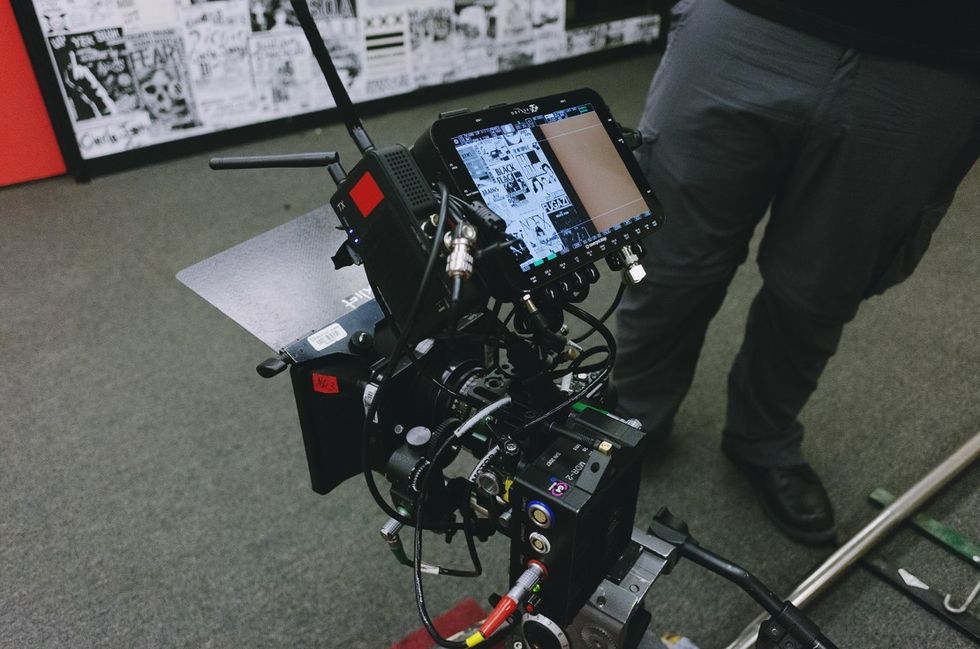
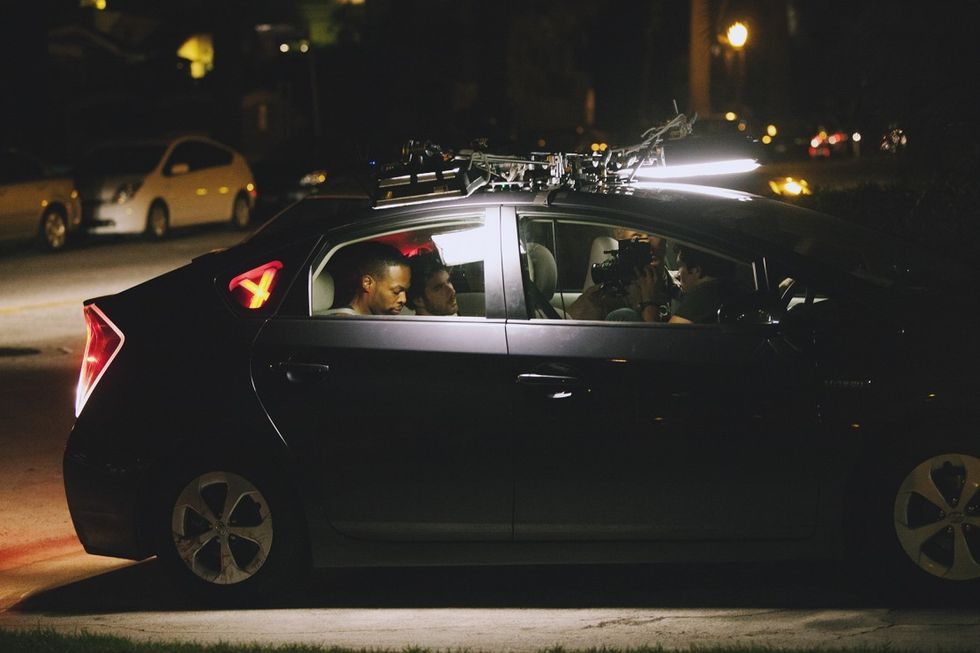
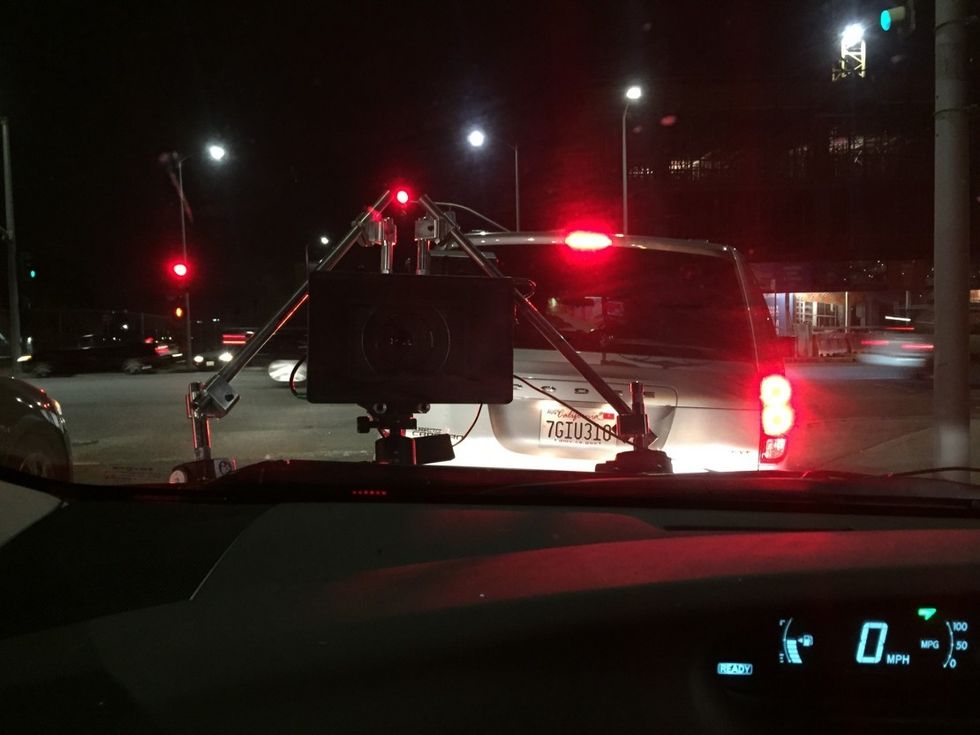
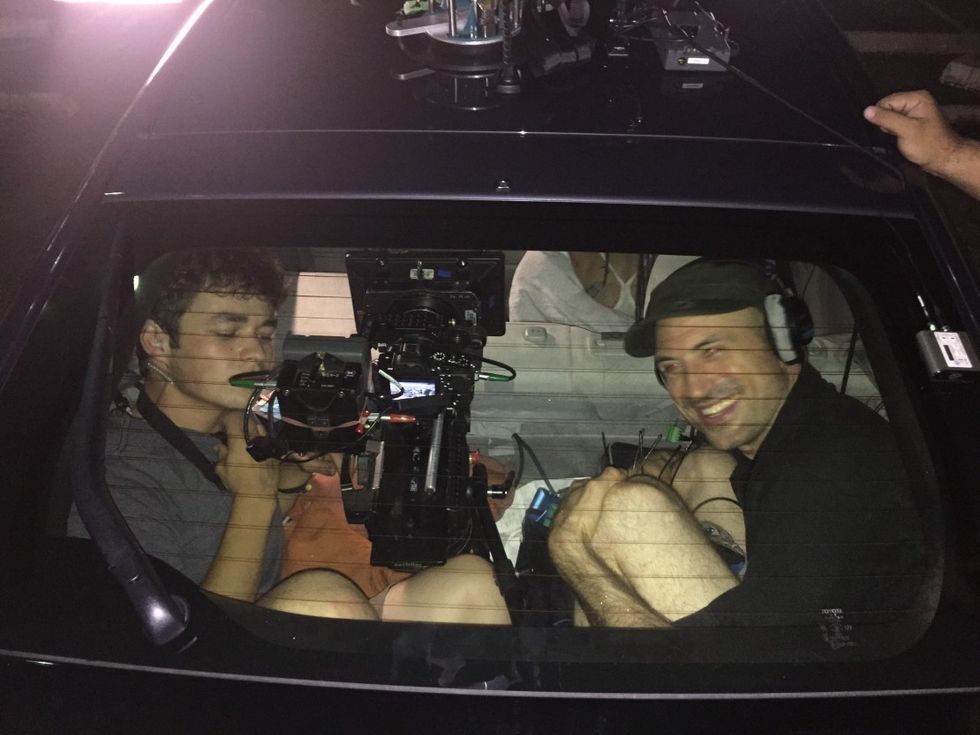
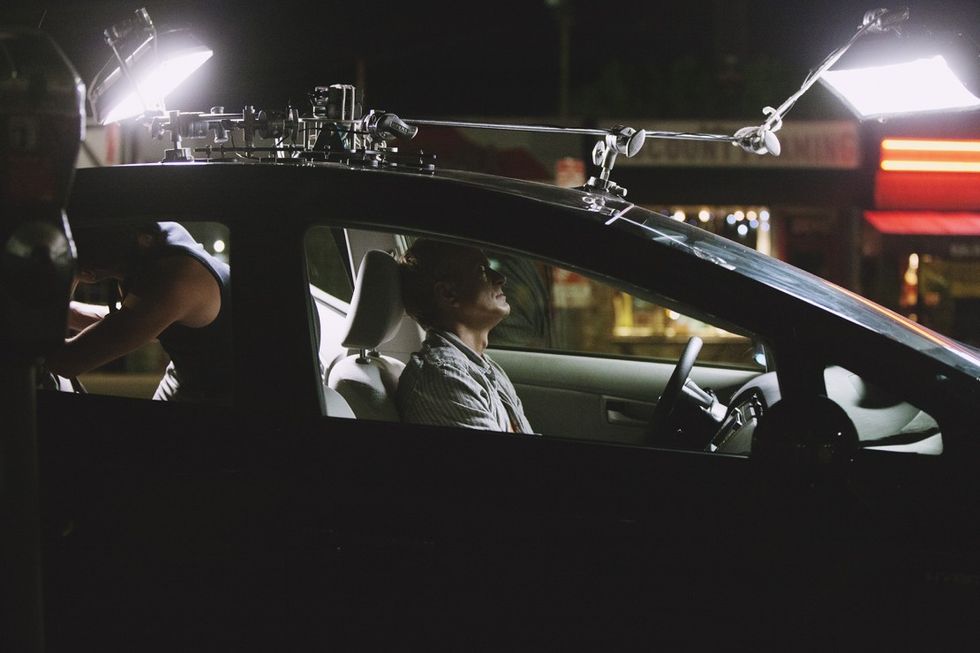










![Ethos, Pathos, Logos: 20 Effective Ways to Advertise [Infographic]](https://nofilmschool.com/media-library/ethos-pathos-logos-20-effective-ways-to-advertise-infographic.jpg?id=34064614&width=600&height=600&quality=90&coordinates=560%2C0%2C0%2C0)

